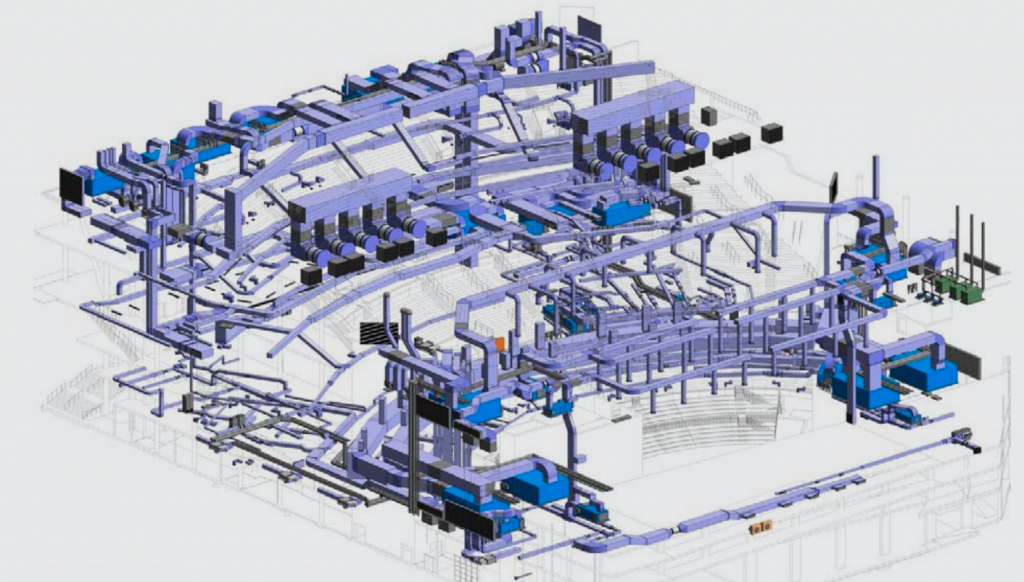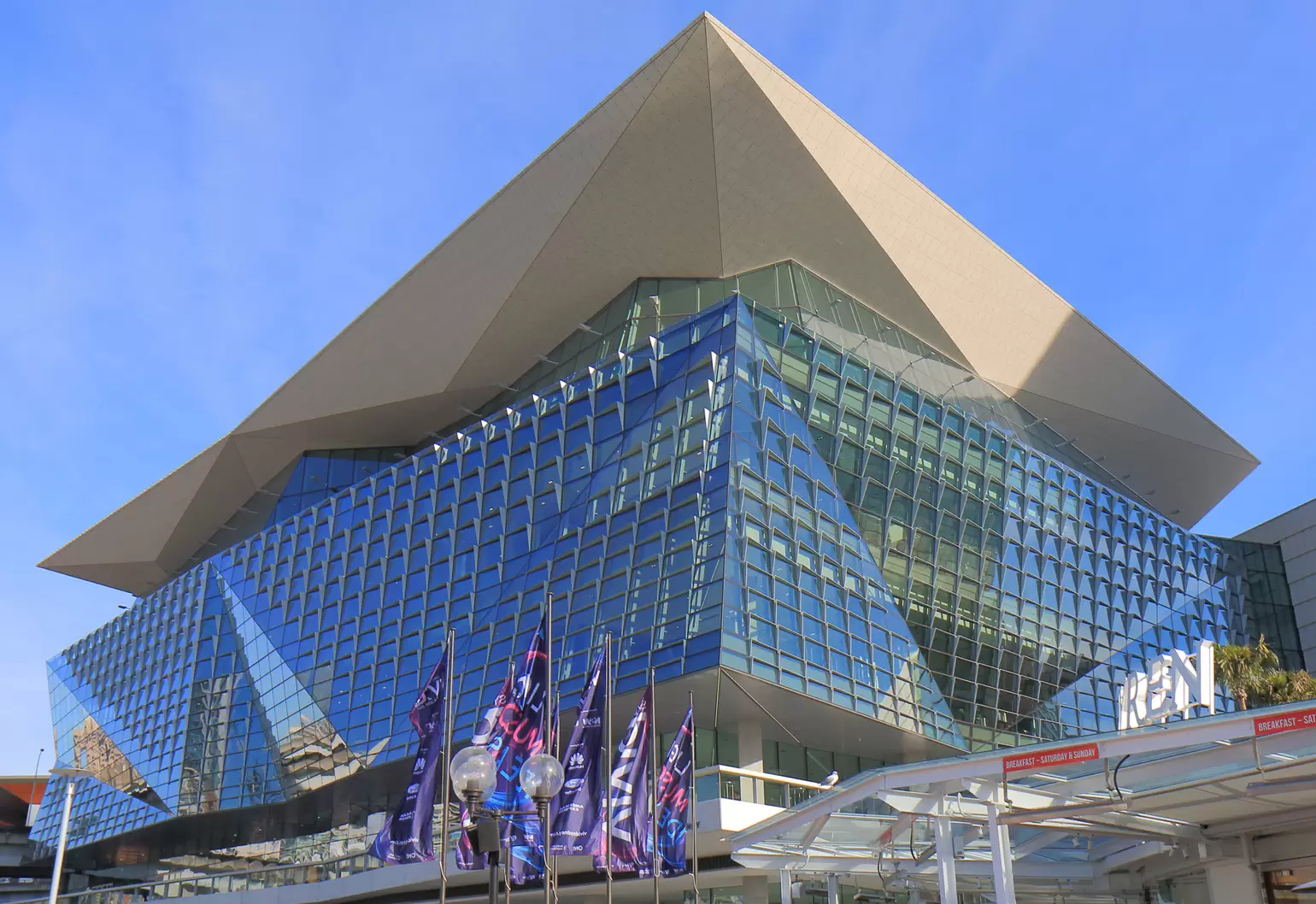When was the last time you thought about your air-con? Probably when it stopped working in 40º heat. Getting it right for a house is hard enough, so imagine the complexity of keeping a large facility like Sydney’s International Convention Centre cool.
The $1.5 billion International Convention Centre (ICC) Sydney is billed as the country’s leading integrated convention, exhibition and events complex. Including an 8000-seat theatre, two halls and exhibition capacity totalling 35,000 square metres, and the city’s largest ballroom, the ICC Sydney can hold a multitude of events concurrently throughout the entire venue.
The diversity of the facilities and the complexity of its central energy plant project required constant collaboration with stakeholders, said Michael Dagher, Technical Director – Buildings at AECOM, the consulting engineers on the project.
“How you go about doing it, and who you need to engage with – stakeholders, the building operator, the facility managers, the events managers, the people who will attend the site – is important,” he told create.

Regular meetings from bid phase to completion took place between AECOM and mechanical services contractor A.G. Coombs, as well as with end client Infrastructure NSW, events manager AEG Ogden and facilities manager Spotless.
At the upcoming ARBS 2018 conference in Sydney, A.G. Coombs, AECOM, and equipment suppliers for air-handling units, the building management system and chillers will offer unique insights into the project to deliver the central energy plant for the world-class exhibition centre, which opened in December 2016.
The plant supplies chilled water to the precinct from six large centrifugal water-cooled chillers with a total capacity of 21,400 kW. These are distributed to over 210 separate air handling units and fan coil units, according to A.G. Coombs. Twelve large cooling towers possess total capacity of 24,600 kW and provide condenser water to chillers and heat exchangers, with an additional six large hot water generators with a total capacity of 10,650 kW.
Tricky design challenges were thrown up by the tier-shaped main theatre, which seats 8000, and the two exhibition halls, said Dagher.
“It’s a very tall ceiling – it’s probably about 20 m high – and you need to think outside conventional methods of cooling spaces through overhead air distributions and think about how you get the air into the space using different techniques,” Dagher said of the room, which like the other two theatres, uses underfloor displacement systems.

“What temperature do you need to supply the air at and at what velocity are key parameters. As you can imagine, someone’s sitting in a chair and [if there’s] a draught hitting their ankles they’ll just feel very uncomfortable.”
Of the exhibition halls, he said air distribution challenges included achieving the right temperature for people eight metres below the distribution point and keeping them comfortable with maximum efficiency.
“The idea there in that case, from the central plant perspective, is how do we distribute the chilled water to the precinct?” he said.
“What sort of pumping arrangement, what temperature should we use? Those are all decisions that need to be made in collaboration with designers, suppliers and installers to ensure the designer’s views aren’t contradicting what the supplier believes is the best way to go about, so you have to have installers, designers and the suppliers working together to get to the optimal point.”
The concrete results of this collaboration will be laid out during the discussion. Presenters will outline 12 months of performance levels, and whether the project has delivered on expectations from three different perspectives.
Then there will be an up-close look at the plant and the main theatre for those who have registered for the tour, “just to get an idea of some of the challenges and then what we ended up doing,” added Dagher.
The future of the built environment will be on show at the Air Conditioning, Refrigeration and Building Services Exhibition in Sydney at the ICC on 8-10 May 2018.
This is Australia’s only international air conditioning, refrigeration and building services trade exhibition. To learn more about ARBS 2018 click here.



